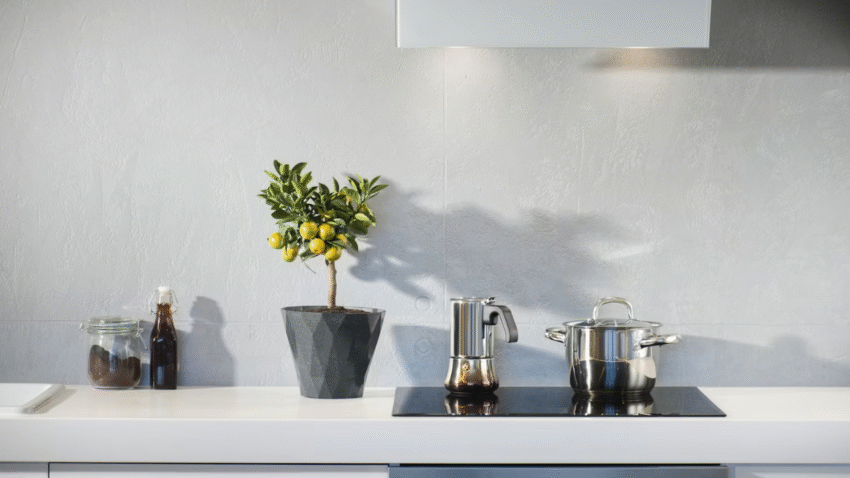Introduction
Struggling to remove burnt food stuck like glue to your favorite pot or pan? You’re not alone. Burnt-on food residue is one of the most common kitchen headaches—and it can make even the best cookware look old and ruined. In this guide, we’ll show you how to remove burnt food from pots and pans using safe, effective, and often natural methods. Whether you’re dealing with scorched rice, caramelized sugar, or burnt-on meat, we’ve got solutions to restore your cookware and save you time.
Why Removing Burnt Food Matters in the Kitchen
Burnt food buildup isn’t just an eyesore—it can affect your cooking results, hygiene, and even the longevity of your cookware. When leftover residue clings to the cooking surface, it can:
- Interfere with heat distribution, leading to uneven cooking
- Create unpleasant odors or flavors in your next meal
- Attract bacteria and grime over time
- Increase wear and tear on nonstick coatings or stainless steel finishes
Keeping your pots and pans clean and free from burnt food ensures a more efficient cooking workflow, better food safety, and a more pleasant kitchen environment overall.
Step-by-Step Guide to Removing Burnt Food
Here’s how to tackle those burnt-on messes with ease:
1. Let the Pot or Pan Cool Down
Never try to clean a hot pan, especially with cold water—it can warp the metal. Allow the cookware to cool completely before cleaning. This also helps prevent accidental burns.
2. Fill with Hot Water and Dish Soap
Pour hot water into the pot or pan until it covers the burnt area. Add a few drops of dish soap (preferably one known for cutting grease). Let it soak for at least 30 minutes to help loosen the residue.
Kitchen Tip: For tougher messes, let it soak overnight.
3. Scrub with a Non-Abrasive Pad
Use a non-scratch sponge or nylon scrubber to gently remove the softened burnt food. Scrub in circular motions and apply consistent pressure.
Reminder: Avoid using steel wool or metal scrubbers on nonstick pans—they can damage the coating.
4. Try Baking Soda and Vinegar (Natural Power Combo)
If soaking didn’t do the trick, sprinkle baking soda over the burnt area and then pour vinegar over it. It will fizz and help lift the burnt residue.
- Let the reaction sit for 10 minutes
- Scrub again with a sponge or brush
- Rinse with warm water and repeat if needed
Note: This method is especially good for stainless steel and enamel cookware.
5. Boil Water and Baking Soda for Stubborn Stains
If burnt bits are still clinging on, fill the pot with water and add 2 tablespoons of baking soda. Bring it to a boil and simmer for 10–15 minutes.
- Let the water cool slightly
- Pour it out and scrub while the surface is still warm
Kitchen Tip: Use a wooden spatula to gently scrape during or after boiling.
6. Use a Commercial Cleaner for Tough Jobs
For extremely stubborn cases, you can use a product like Bar Keepers Friend or a dedicated cookware cleaner. Follow the instructions on the label carefully.
Warning: Always check if the cleaner is safe for your specific pan type (nonstick, copper, etc.).
7. Rinse Thoroughly and Dry
Once the burnt food is removed, rinse the cookware with warm water and dry it completely with a towel to prevent water spots or rust.
Common Mistakes to Avoid
Here are some pitfalls to watch out for when trying to remove burnt food from your pots and pans:
Mistake 1: Using Abrasive Materials on Nonstick Surfaces
Solution: Stick to non-abrasive sponges or soft cloths to protect your nonstick coating.
Mistake 2: Pouring Cold Water on a Hot Pan
Solution: Let the cookware cool before cleaning to avoid warping or cracking.
Mistake 3: Ignoring the Burnt Mess Until Later
Solution: Clean up burnt food as soon as the pan cools. The longer it sits, the harder it gets to remove.
Mistake 4: Using Harsh Chemicals on Food Surfaces
Solution: Opt for natural methods like baking soda, vinegar, or dish soap. Save strong chemicals for rare, extreme cases only.
Mistake 5: Scraping Aggressively with Metal Tools
Solution: Use a wooden or silicone spatula to avoid scratching or damaging the cookware surface.
Extra Tips & Kitchen Hacks
Want faster, easier cleaning results? Try these bonus tips:
Tip 1: Use Dryer Sheets for Overnight Soaking
Add a dryer sheet to a pan filled with warm, soapy water and let it soak overnight. In the morning, burnt food will wipe away more easily.
Tip 2: Lemon Power for Natural Degreasing
Cut a lemon in half and rub it directly on the burnt area. The acid helps lift residue and leaves a fresh scent.
Tip 3: Keep a Dedicated Cookware Scrubber
Reserve one sponge or brush just for cookware to avoid cross-contamination and to make cleanup more efficient.
Next Task: Now that your pots are clean, learn how to prevent food from burning by using proper heat settings and pan types for different foods.
Conclusion
Removing burnt food from pots and pans doesn’t have to be a chore. With a little patience and the right technique—like soaking, natural cleaners, or boiling with baking soda—you can rescue your cookware from even the worst kitchen mishaps. Remember to avoid common mistakes and use tools and tips that suit your pan’s surface. With these steps, you’ll have your pots and pans looking clean, shiny, and ready for your next meal.
Bookmark this guide to make burnt pot cleanup stress-free every time!
